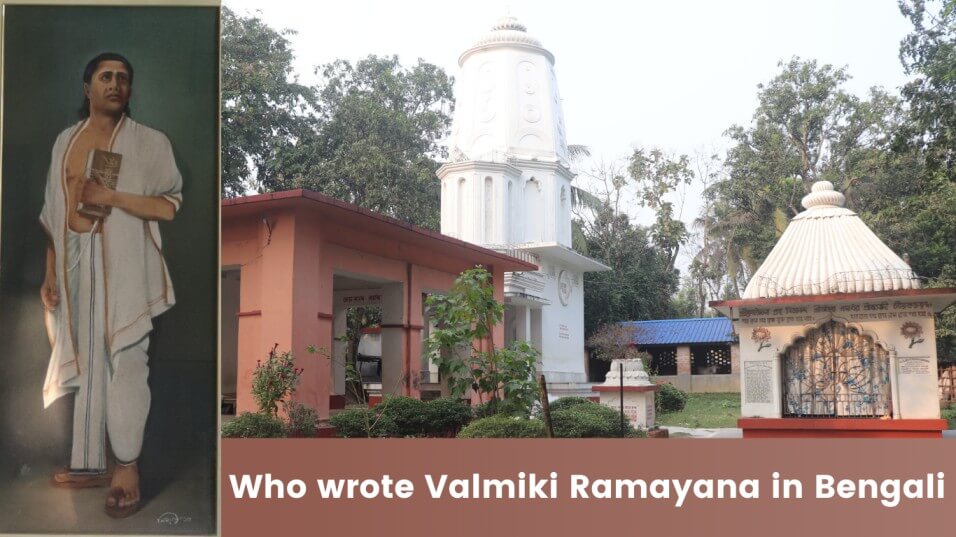I am going to ask you a simple question, who is the author of Ramayana? You can definitely answer me with Valmiki. But do you know who writes Ramayana in the Bengali language? I am not sure what will you answer.
The answer is Krittibas Ojha. We are so busy with our daily lifestyle. If you have some questions, you will search on Google and this is the main problem. In the old day, people used to ask questions to the Guru.
They had accurate and deep knowledge. Do you have the same? Obviously no. From Ramayana, you can learn so many parts, especially responsibility. Rama left his kingdom just for his father’s decree.
Not only Ramayana Krittibas Ojha also gives us many Bengali writes in poem format. Some of Krittibas Ojha’s books you can still read from the Krittibas library. You will find this library in Kabi Krittibas Dhaam.
Who is Krittibas Ojha?
Krittibas Ojha was born in a Brahmin family in the Nadia district of WB and the name of the village is Phulia. Krittibas Ojha is the eldest son of Banamali Ojha. The advent of Krittibas Ojha was Maagh Maas (January/February), Sri Panchami, Sunday, 1440 AD.
The writer of Valmiki Ramayana in the Bengali language. In 1381–1461 people use to write books in poem format. Krittibas Ojha was one of the greatest medieval poets (Bengali).
Krittibas Ojha is well-known for his Sriram Pacali (Valmiki Ramayana in the Bengali language). Krittibas Ojha has written 9-15 great books including Ramayana.
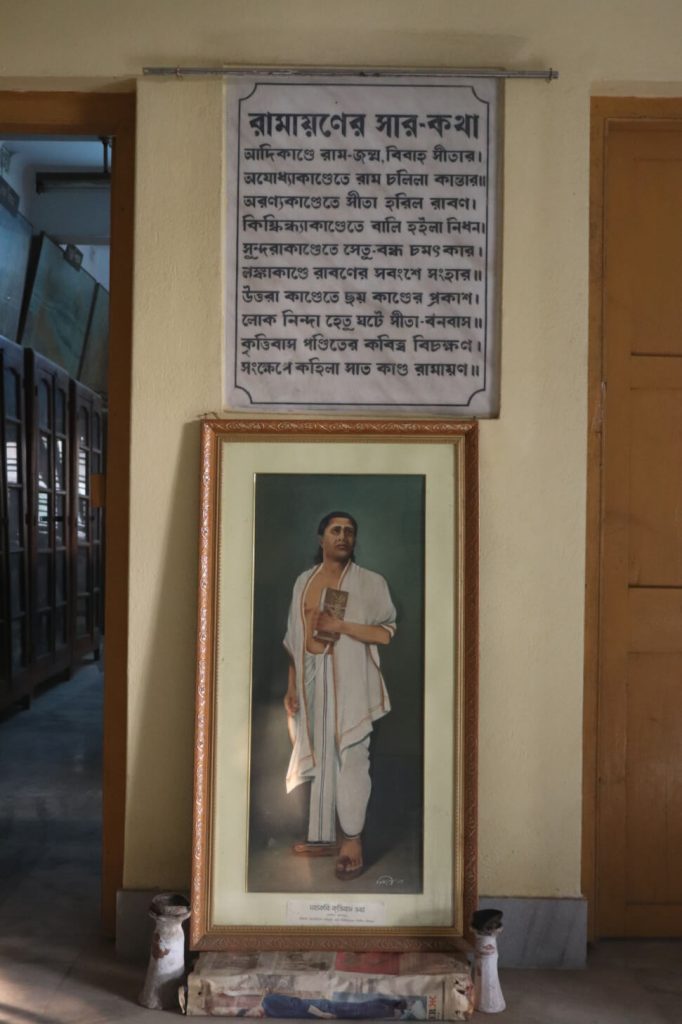
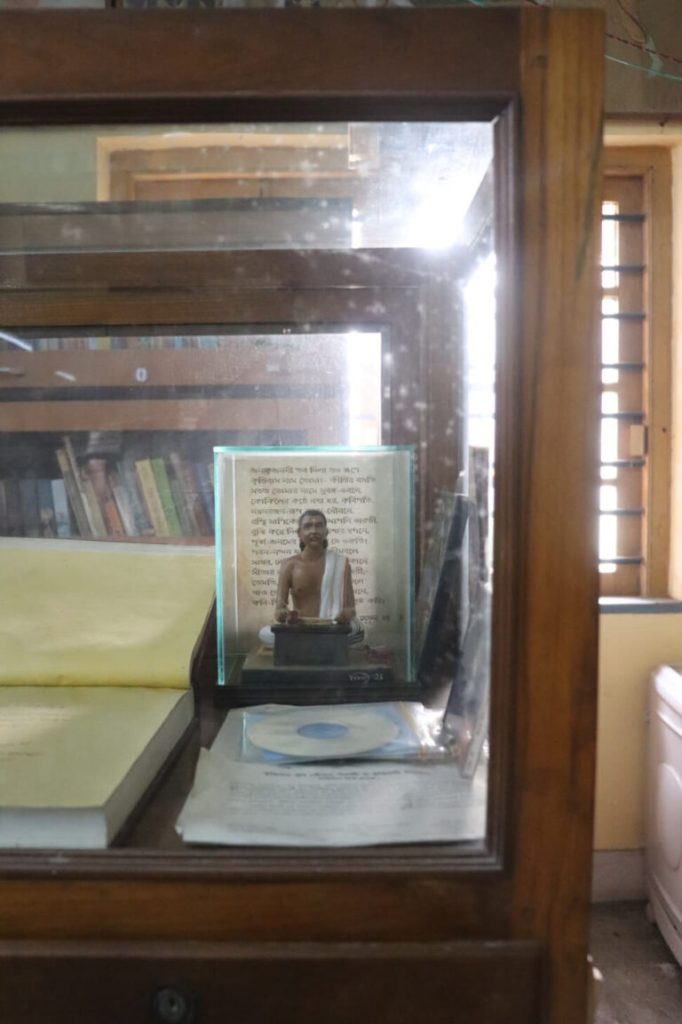
In the library, you can so many books that are only based on Hindu literature.
Village of Krittibas Ojha
As I told you before the name of the village is Phulia. Very fast you will see a gate where you can see Krittibas Smriti Toron. This gate is connected with Krittibas temple and the samadhi mandir.
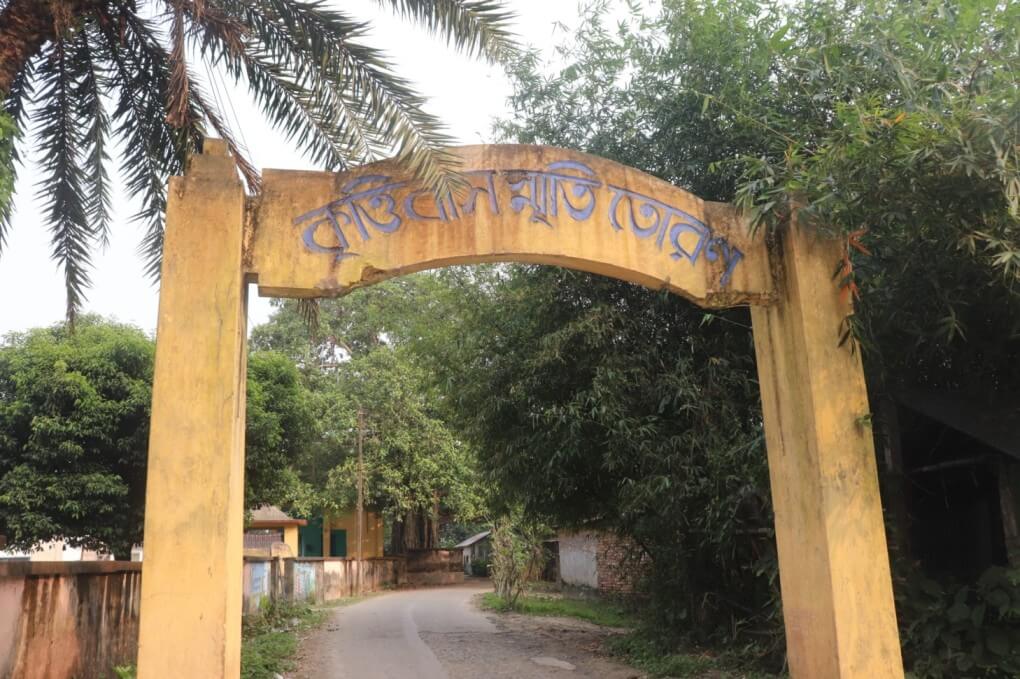
Beside this gate, you can see Fulia Krittibas Smriti Vidyalaya. All the institutions you can find here, are connected with Krittibas Ojha’s name. In front of this school, you can see one Kua, one Hari mandir, and one banyan tree.
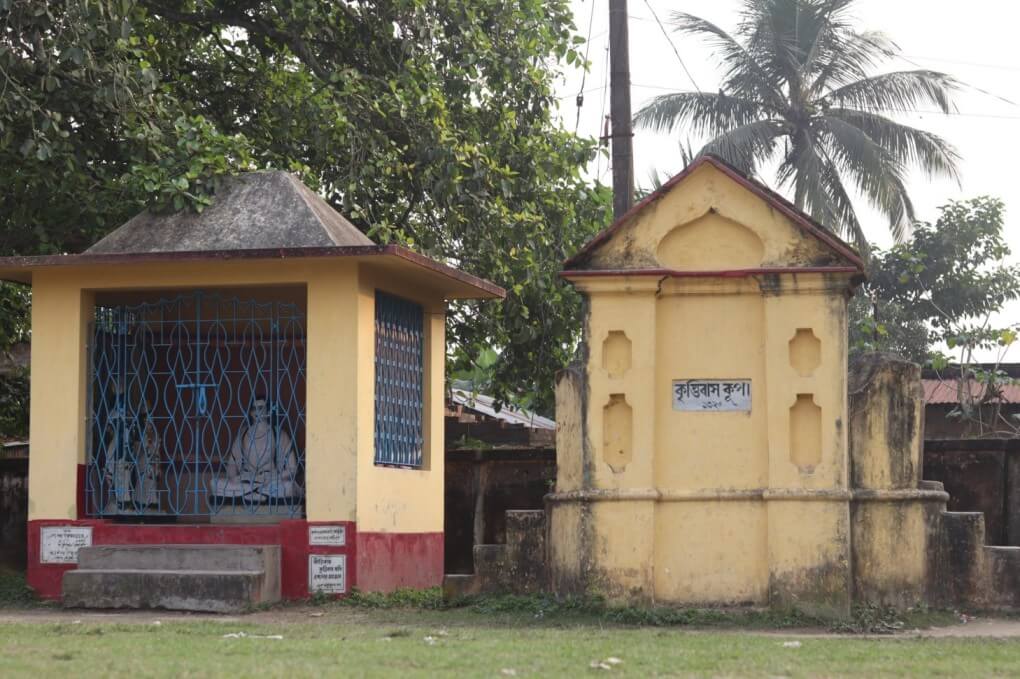
This Kua is made by Krittibas without anyone’s help. His family used this Kua’s water. Nowadays you can’t see a drop of water. I am not sure about the time when the Kua was built.
Read: Mukundanagar ghat – Tourist attraction in Chakdaha
You can only see plastic bottles. Here you can also find a cemetery where you can see the date of Krittibas Ojha’s advent. This banyan tree is very famous for Krittibas Ramayana.
Under this banyan tree, Krittibas Ojha had written Ramayana in the Bengali language. According to the Hindu calendar, the last Friday of Maagh maas is fully loaded with huge people.
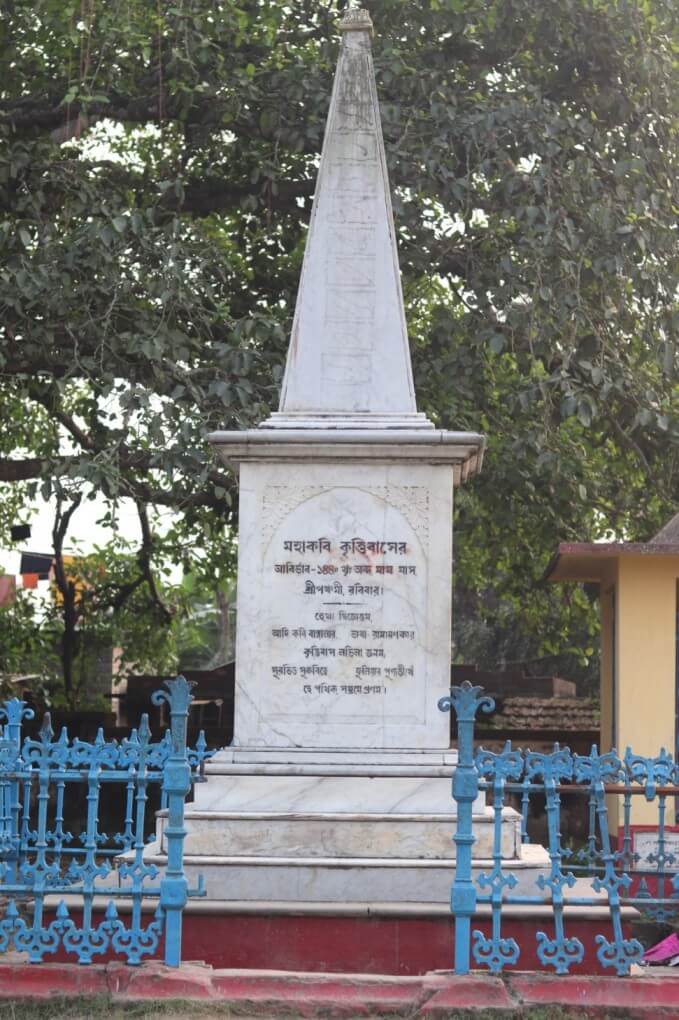
Here you can spend your time in a relaxed moment. If you have time and you are carrying a camera then this place is good for photoshoots. You can make your time memorable.
Phulia is under Santipur thana. Phulia village is connected with NH12. So, your travel will be easy. Don’t need to worry about the train, bus, and Toto.
Take the road and walk for 3 minutes. Look at your left side you can see Krittibas library and Haridas Thakur Ashram. In the library, you can see a huge amount of books and the library man is very friendly.
Radha-Krishan temple
All of the instructions here are in the Bengali language. A beautiful and calm place. Here you can see 4 Gods and Goddesses including Radha and Krishna. The white color of this temple gives a long-distance view.
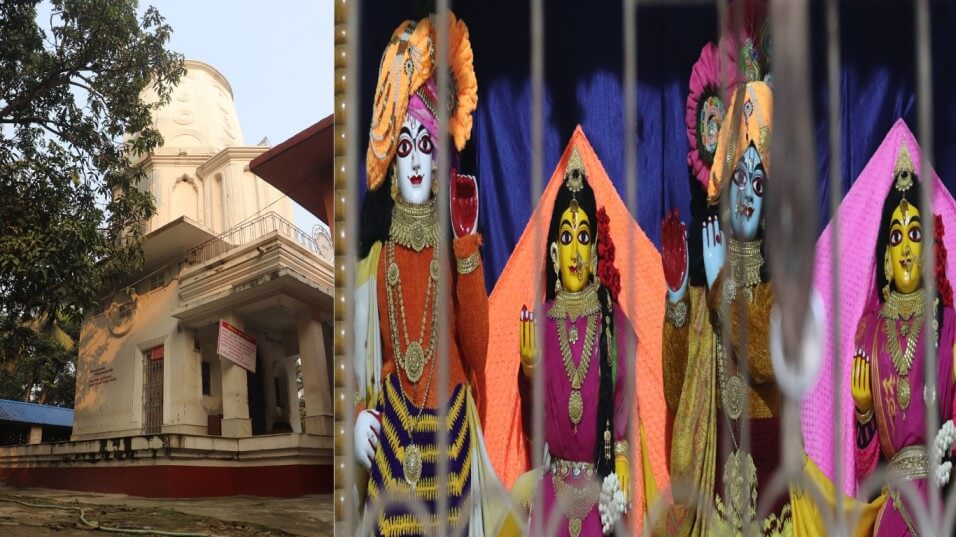
In the Radha-Krishna temple, the Priest does six-time puja. The time of pujas is Morning 5 AM, 8-9 AM, Noon 12-1 PM, Afternoon 4 PM, Evening 6 PM (Wintertime), 7 PM (Summertime) Night 9 PM.
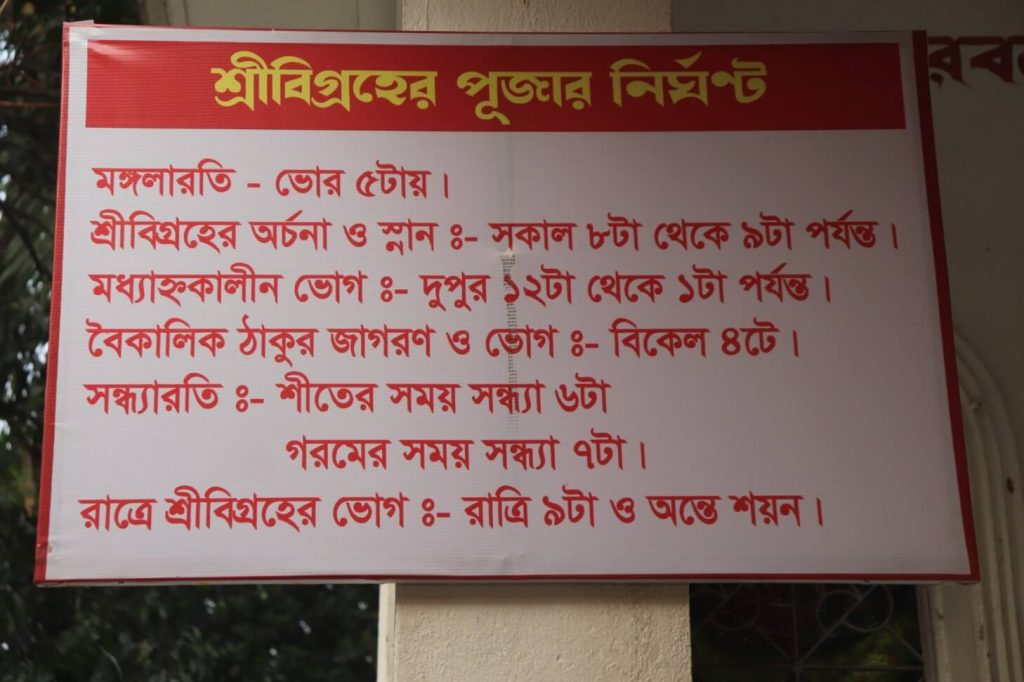
In front of this temple, you can sit relaxed. Almost 50 people can easily sit here. The top side is covered with a cemetery shadow. I have sited here for a long time and you can also. People are always coming here to do puja.
On the right side of this temple, a tin shade is available. When people come here in large amounts, they can take their place here. The floor of this shade is clean.
Hari Temple
You will see a small hair temple. Around all of these temples has a small area of the cemetery. Every time you should put off your shoes. This is not about you doing some hard task. It’s all about respect.
Read: Explore Habibpur Iskcon Temple 2022 new updates
In front of this temple, you can see a peepal tree. People love to spend their time under this peepal tree. This peepal tree always gives fresh air. If you are planning your day to come here in the Summer season then you will get a cold environment.
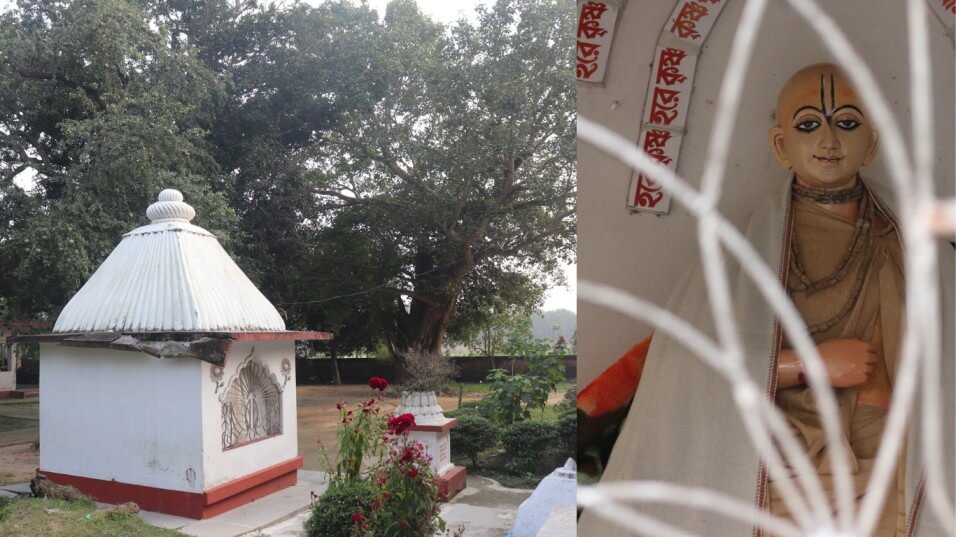
When you will enter this area, very first you can see the green board. On this board, you can read how Vaishnavacuramani Namacharya Haridas came here and start Japa for 3 lakh times Hare Krishna a day.
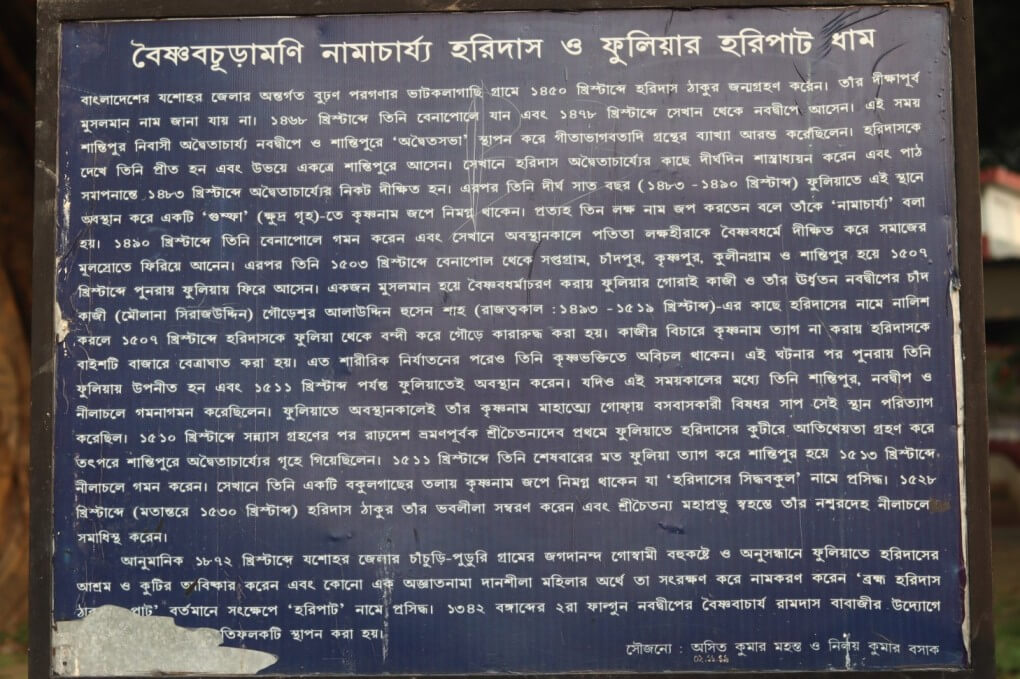
Read this whole part in the English language
Vaishnavacuramani Namacharya Haridas and Haripat Dham of Phulia
Haridas Tagore was received in 1400 AD at Datkalagami village in Budha Pargana under Jessore district of Bangladesh. His Muslim name is not known. He went to Benapole in 148 AD and from there to Navadis in 1489 AD.
Advaitacharya, a resident of Shantipur, started the interpretation of Taratadi by setting up ‘Advaitasabha’ in Navadvipa and Shantipur. He was pleased to see Haridas and came to Shantipur on two acres.
There Haribas made a long pilgrimage to Advaitacharya and at the end of his studies, he was initiated by Advaitacharya in 1483 AD. He stayed at this place in Phulia for seven long years (1483-1490 AD) in a ‘Gulka’ (a small house) chanting Krishna.
He was called ‘Namacharya’ as he used to glorify three lakh names every year. In 1490, he moved to Benapole, where he converted the prostitute Lakshahira into Vaishnavism and brought her back into the mainstream of society.
He then returned to Kuliya in 150% AD from Benapole in 1500 AD via Sangram, Chandpur, Krishnapur, Kungram, and Shantipur. Haridas was imprisoned in 1506 AD after a complaint was lodged in the name of Haridas with Gaulieshwar Alauddin Hussain Shah (reign: 1493-1519 AD).
Haridas was flogged in 22 markets for not leaving Krishna’s name in Qazi’s trial. Even after so much physical torture, he remained steadfast in Krishnabhavi. After this incident, he again reached Phulia and remained in Phulia till 1511 AD.
However, during this period he traveled to Shantipur Navadwip and Nilachal. While staying in Phulia, a poisonous snake inhabiting Gohar in his Krishna name Mahatma left that place.
After taking asceticism in 1510 AD, Radhas traveled to Sri Chaitanya, first attained Atibayata at Haridas Kuchi in Phulia, and then went to Advaitacharya’s house in Shantipur. He left Phulia for the last time in 1511 AD and went to Nilachal in 1510 AD via Shantipur.
There he lives under the name of Krishnanam Rina Nima which is famous as ‘Siddhabakul of Haridas’. In 1526 AD (1500 AD according to the sect) Haridas Tagore buried his body and Sri Chaitanya Mahaprabhu majestically buried his body in Nilachal.
In about 162 AD, Jagdananda Goswami of Chanchuri-Puchuri village in Jessore district discovered Haridas’ ashram and cottage in Phulia with great difficulty and after preserving it in the name of an anonymous philanthropist, renamed it Brahma Haridas Pat.
The reflector was erected on the initiative of Vaishnavachar Ramdas Babaji of 2nd Falgun Navadwip in 1342 BS. Courtesy of Asit Kumar Mahanta.
A man once was a Muslim then he chose to convert to Hindu and then he starts promoting. During this time, Namacharya Haridas faced so many problems but he never give up.
Sri Panchatatva Temple
This is the third number temple. There is nothing much. Two Chaitanya Mahaprabhu status is standing and at the middle point, you can see Sri Jagannath with Sri Balabhadra and Devi Subhadra.
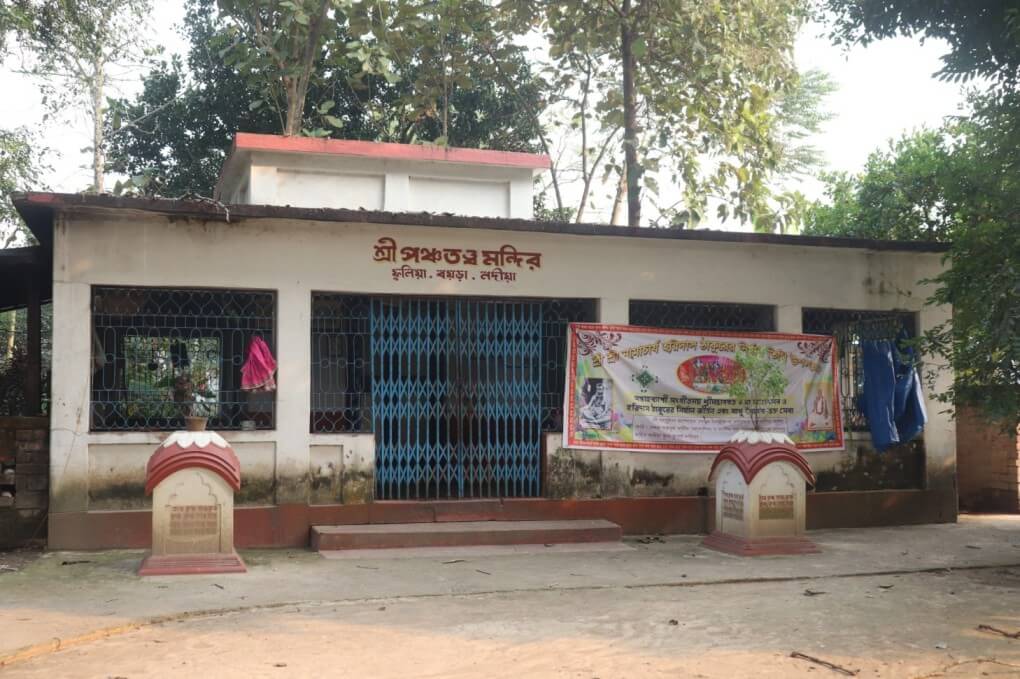
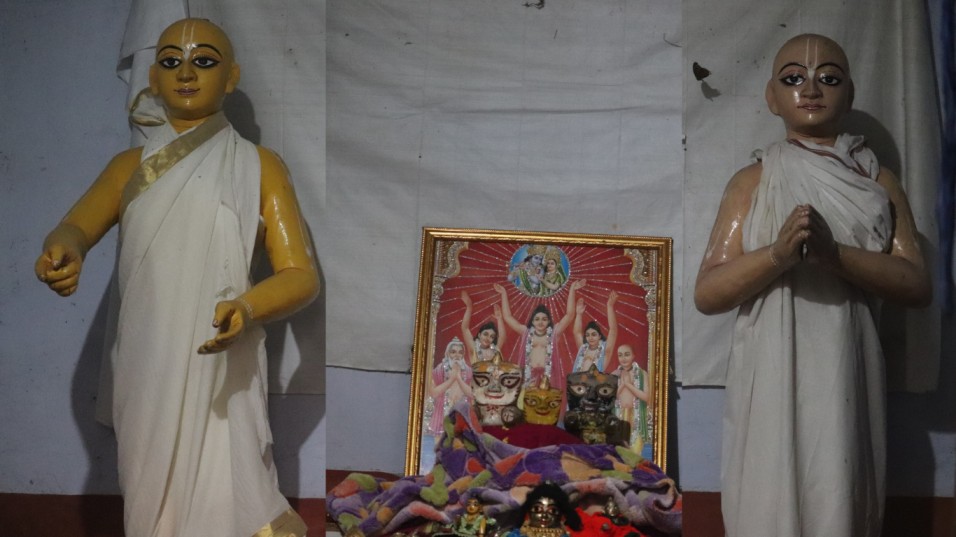
If you want to see this temple open then you have to come here after 4 PM. In this temple, you will probably see some devotees eating. If you want to have some prasad, you can. They will be happy to feed you.
Naam Yagya Stage
There is a small stage of Naam Yagya. Inside this stage, you can see a small Radha-Krishna home. A small Rath that is used in the Rath Yatra festival.
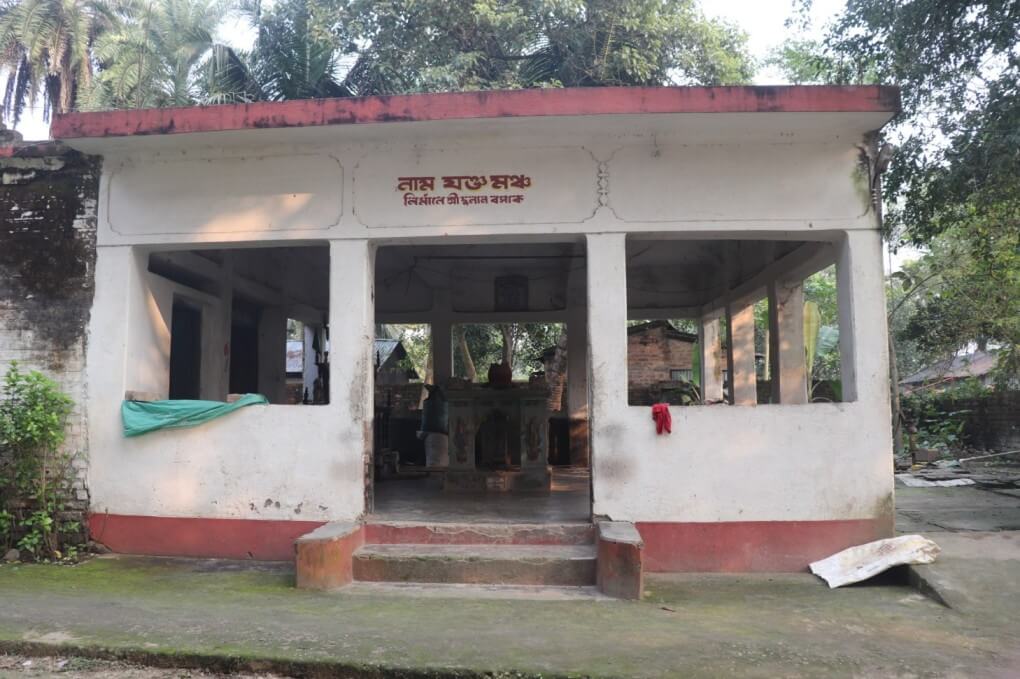
In front of this stage, you will see a mango tree. On the bottom side, there is a sitting area. If you want to take some rest then you can. This place is neat and clean. Every temple is connected in small ways.
Mahakavi Krittibas’s Asthi-Samadhi
There are so many arguments and debates on Krittibas death’s date. But we have seen 900 Bangabda. You have to agree with this date because of the cemetery.
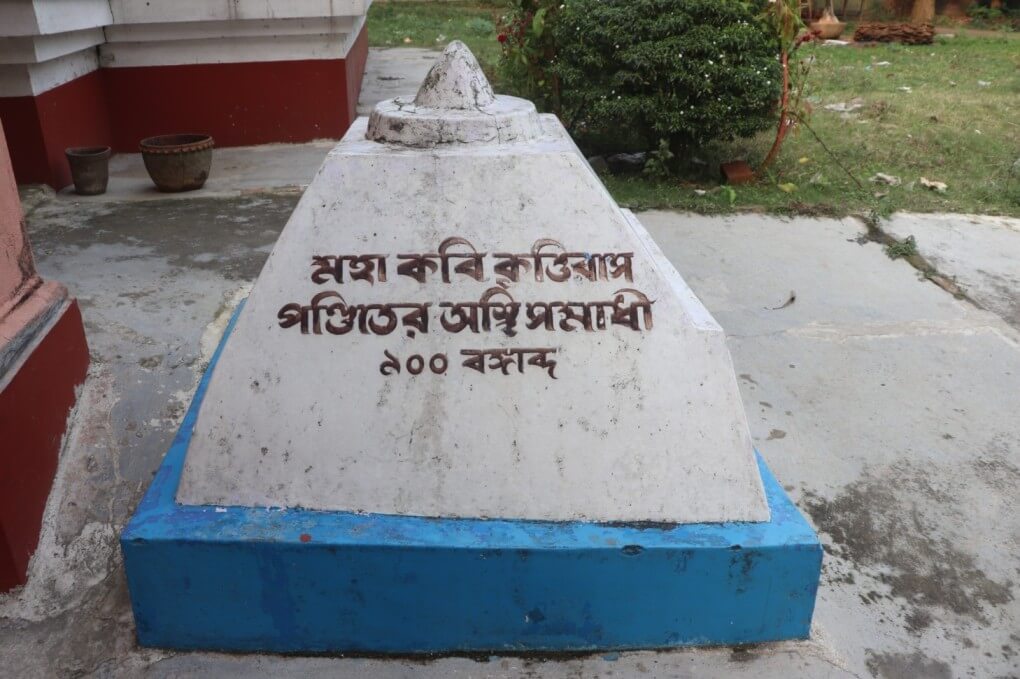
You can touch it or you can take photos. Don’t need to worry about rules. Just you have to put off your shoes. I have seen some people not putting off their shoes. What do you think about this?
This place is well-known for this Asthi-Samadhi and Haridas Thakur. Haridas Thakur spent his golden time here and has done many spiritual activities. This place is a Tirtha Stana. For a Hindu person, this place is a god-gift.
Krittibas Memorial Library cum Museum
I have visited this place twice just for this library. The library opens 4 days a week. Sunday, Monday, Tuesday, and Thursday are the 4 days. But the condition is you have to come here after 2 PM if you are willing to explore this library.
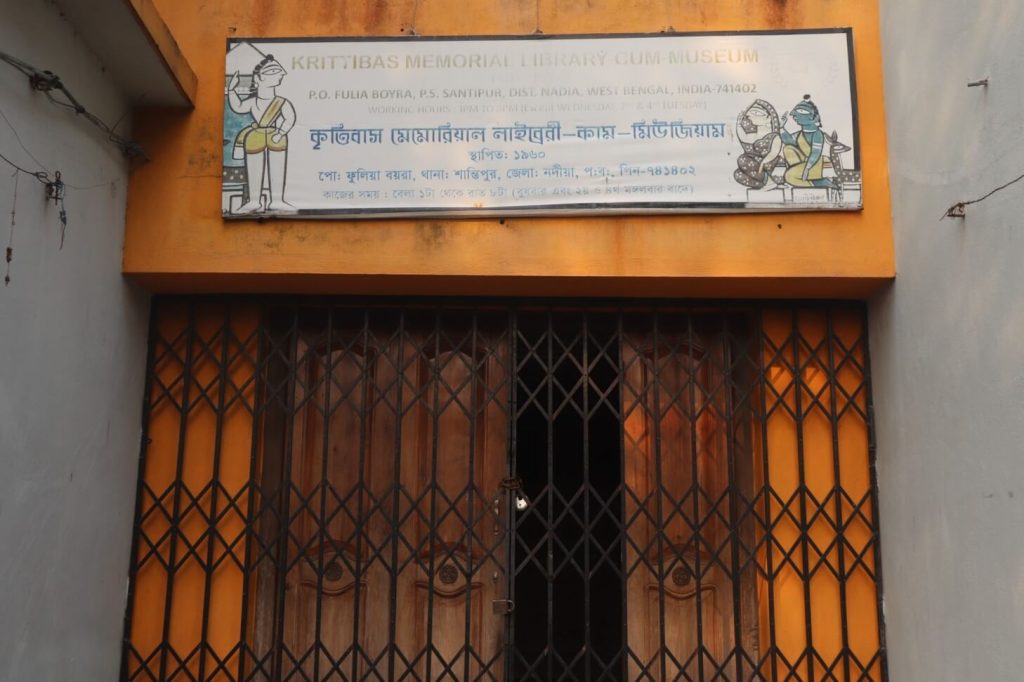
By mistake, we have gone here Saturday and like other days Saturday is the close day. The next day (Sunday) we visited this place only for this museum.
Garden of the library (Krittibas Ojha)
The garden looks general. Only a few flowers are here. Nothing much but all of them are beautiful. Small flowers make this museum more attractive. Every time you will find some flowers that are already doing the task.
Read: Sabuj Deep A Fascinating deep on Ganga in 2022
A small line in the garden gives you the feel of real nature. One way is connected with the main gate. And from here another one has connected the second gate and main room.
We have seen an old car here but unfortunately, this car is in a bad condition. The library man is saying this car is here for 4 years.

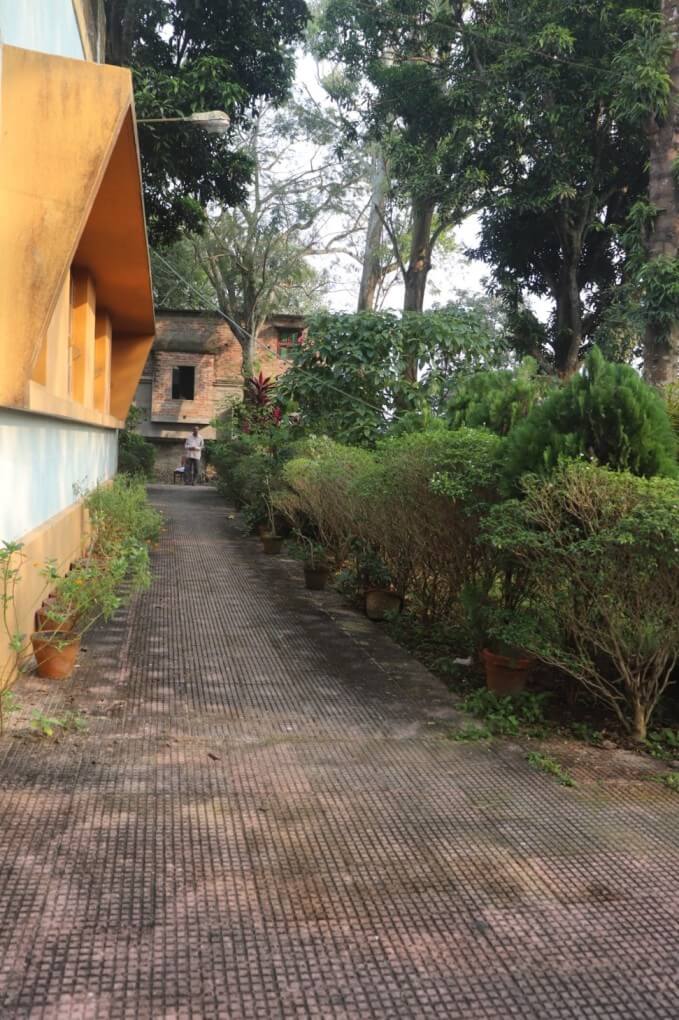
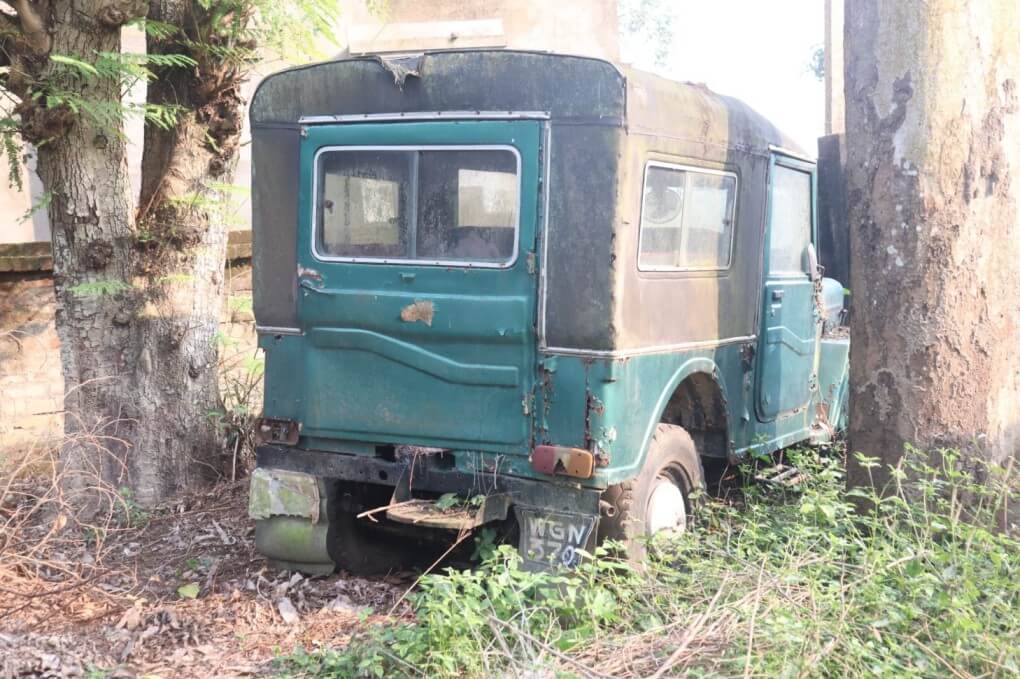
Potit Tomo Mishra is now controlling this museum’s tourists. Potit Tomo Mishra working here since 1999. Before Mishra, Keshab Lal Chakraborty was working here for 42 years.
This man is very friendly. We didn’t have any ideas about this library but this man is really awesome and he has helped me a lot.
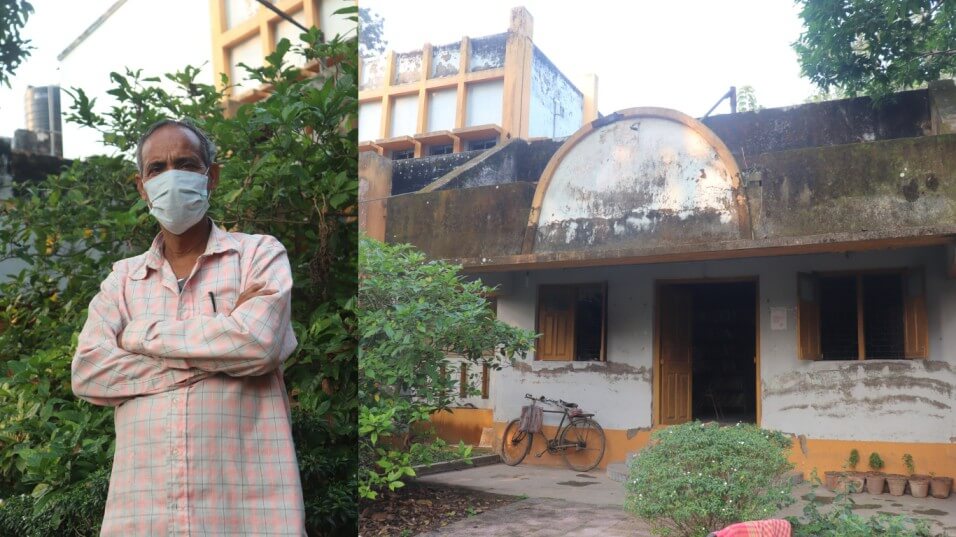
Let’s talk about this library. The library man will show you India’s largest flag first. I have taken a photo of India’s largest flag and you can see the flag. You can watch the video that I have attached here of the first room.
The width of this flag is 121.5 ft and the height of this flag is 81 ft. The height of the pillar is 181.6 ft. This is one of the great parts of this library (Krittibas Ojha).
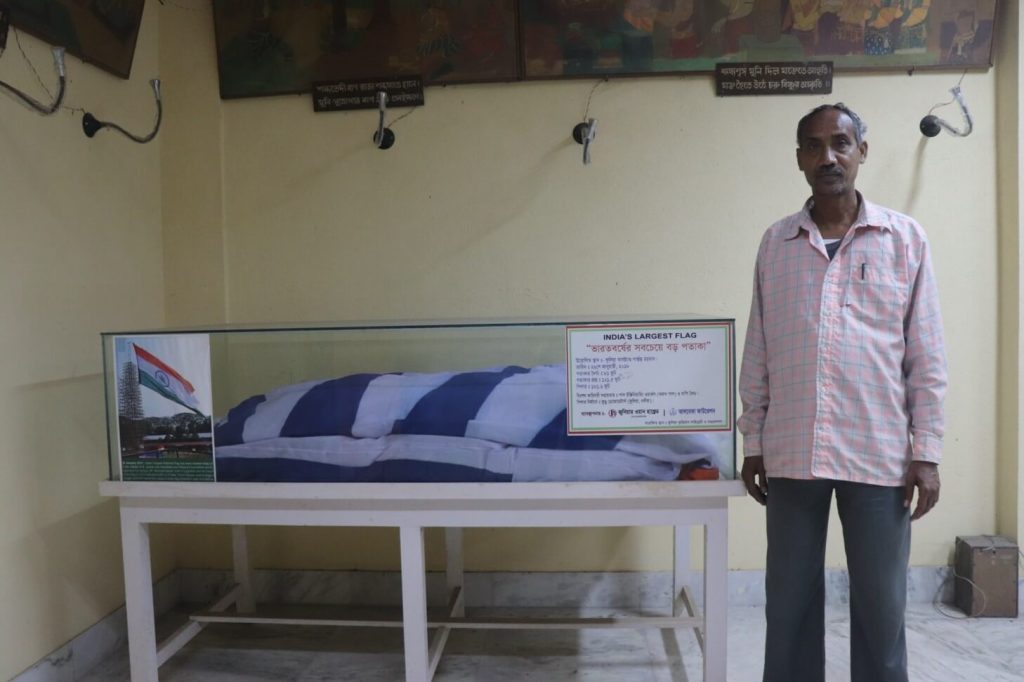
In the same room, you will find so many Ramayana images that told you the story of Ramayana. All of these images are on the top side of the wall.
Ramayana Exhibition Room
After watching the first room the library man will show you the Ramayana exhibition room. But before entering the exhibition room you should look at the outside of this room. Some of the great leaders’ images are here.
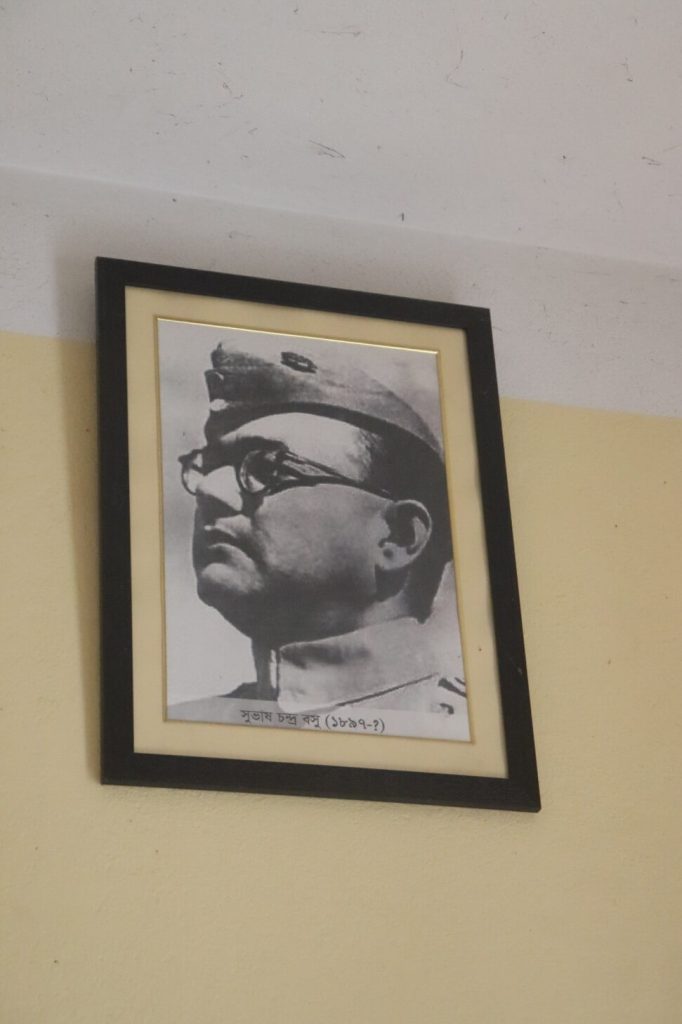
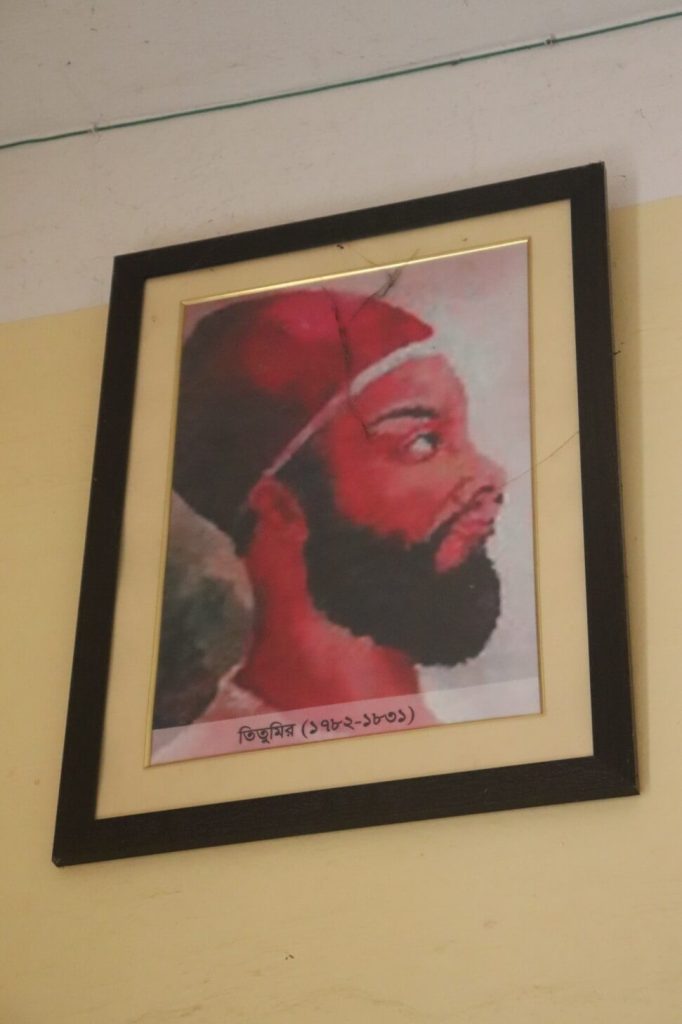
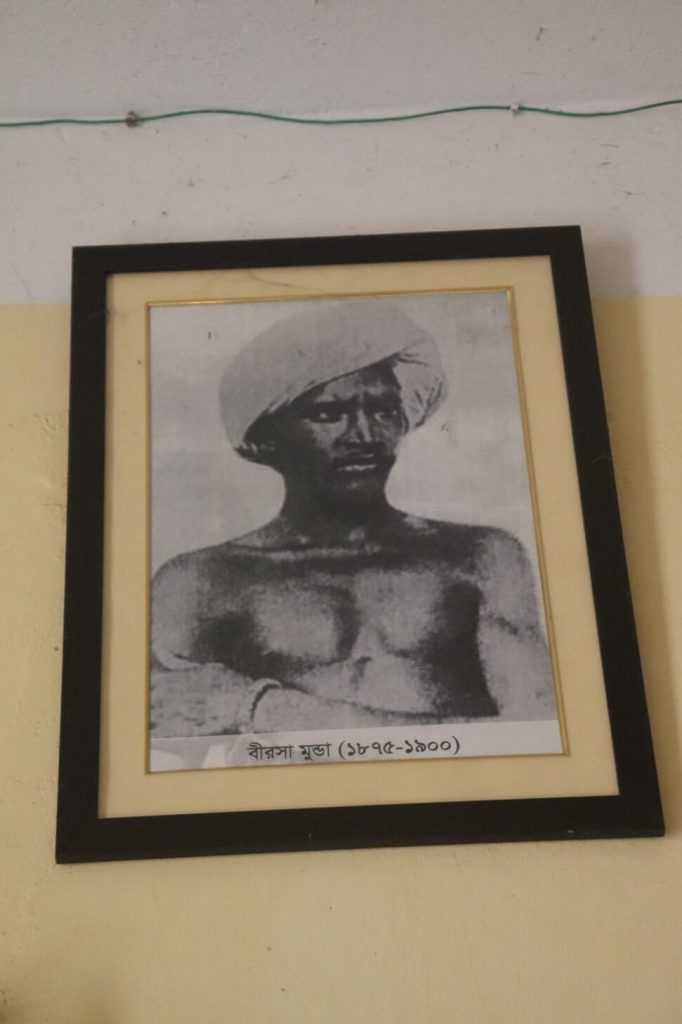
On the ground, you can see some of the paper covered by Krittibas Ojha’s writing. Here you can also find the blood relation list of Krittibas Ojha. Let’s go inside the Ramayana exhibition room.
Read: largest and marvel Iskcon temple Mayapur 7 minutes tour
You will be speechless after entering the exhibition room (Krittibas Ojha). Here are the some of photos that I have taken. Hope you will feel some excitement. Your time and your money totally worth it.
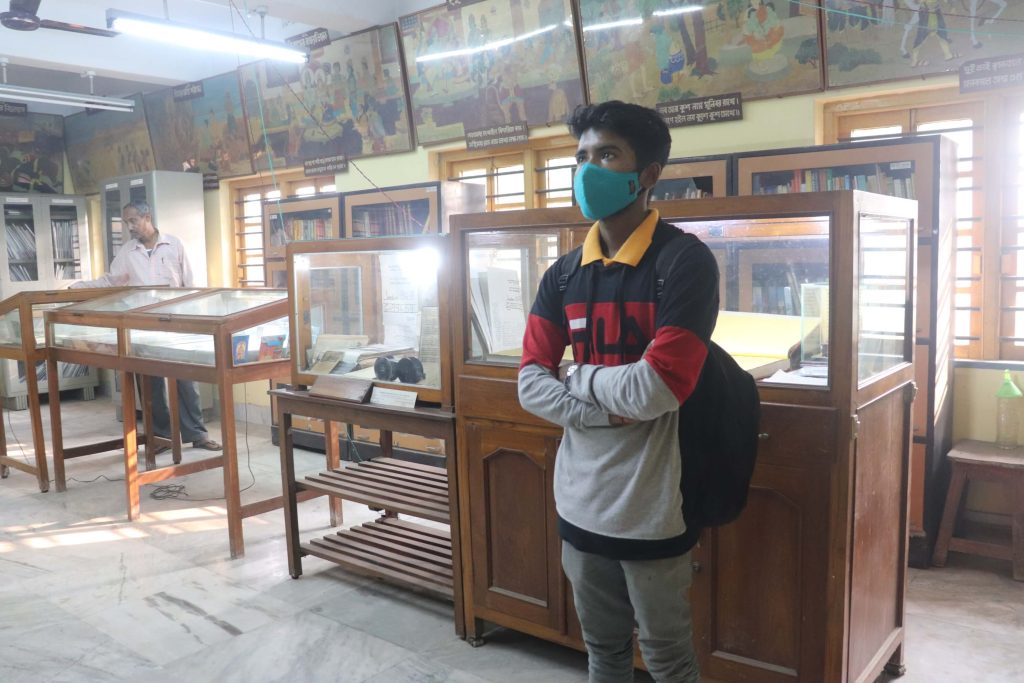
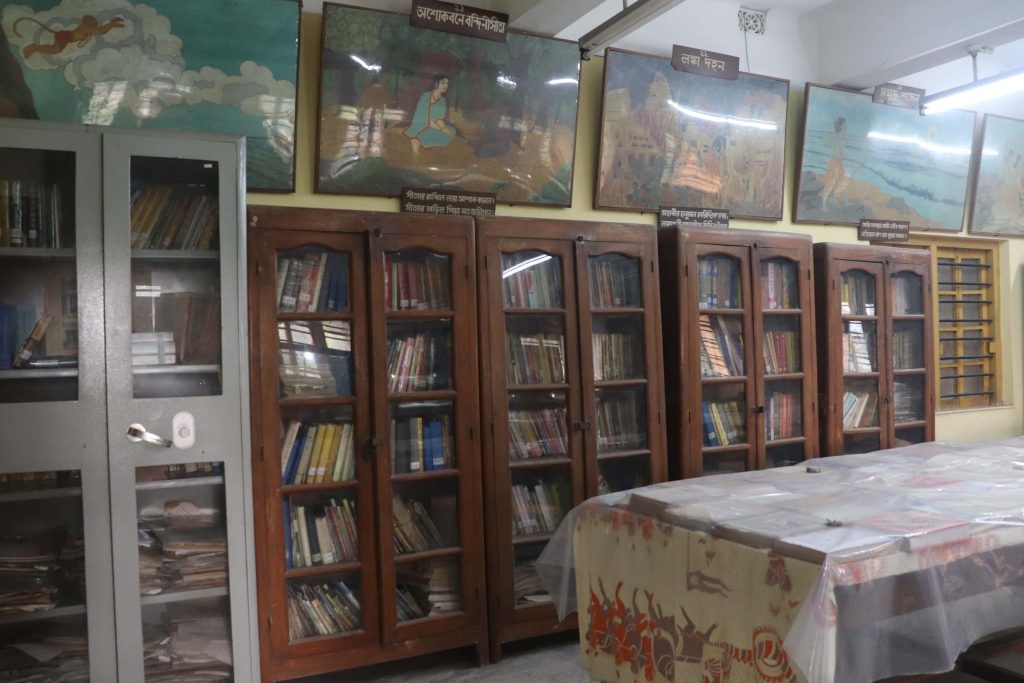
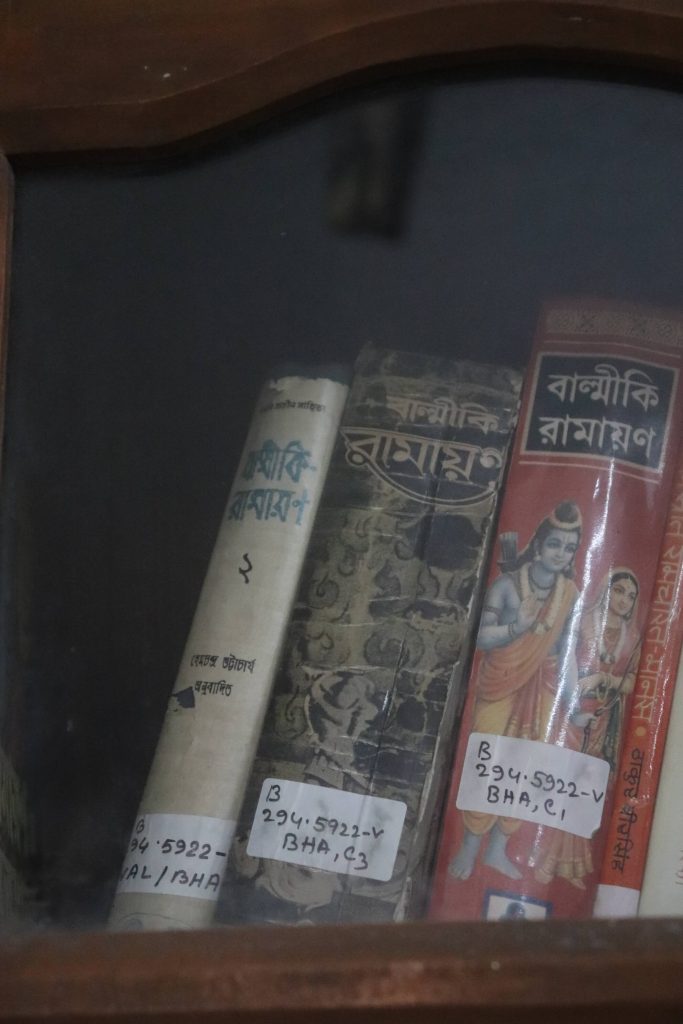
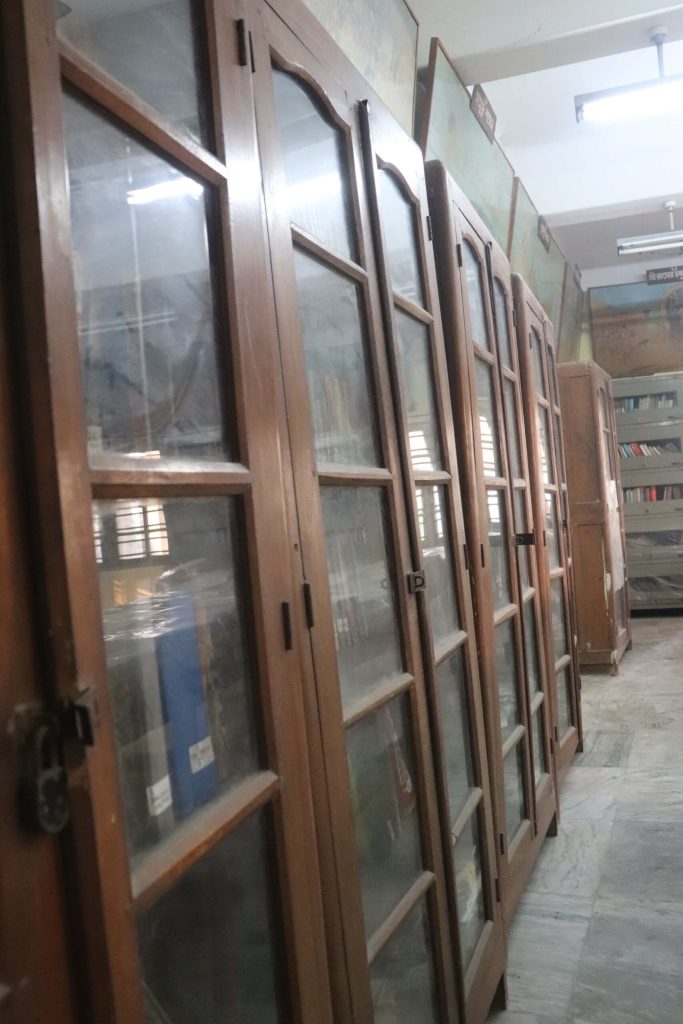
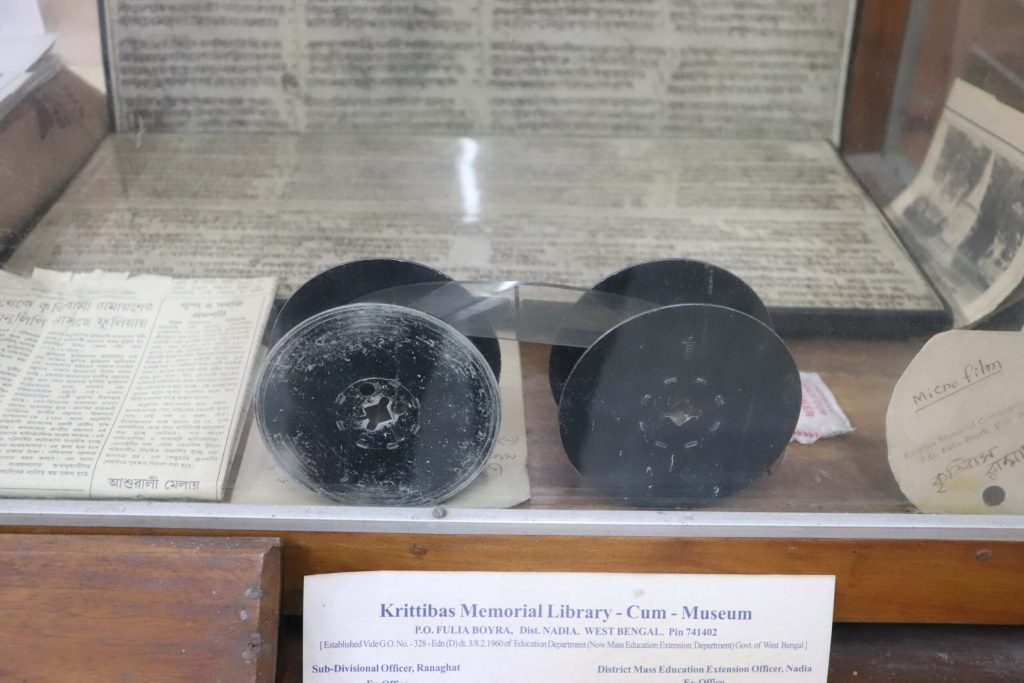
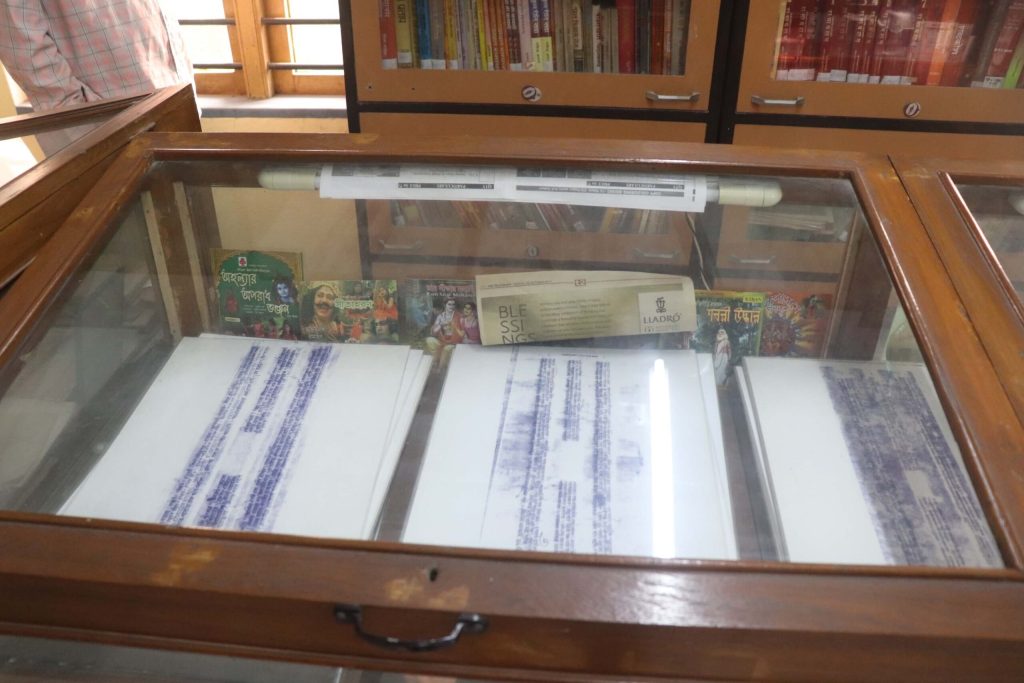
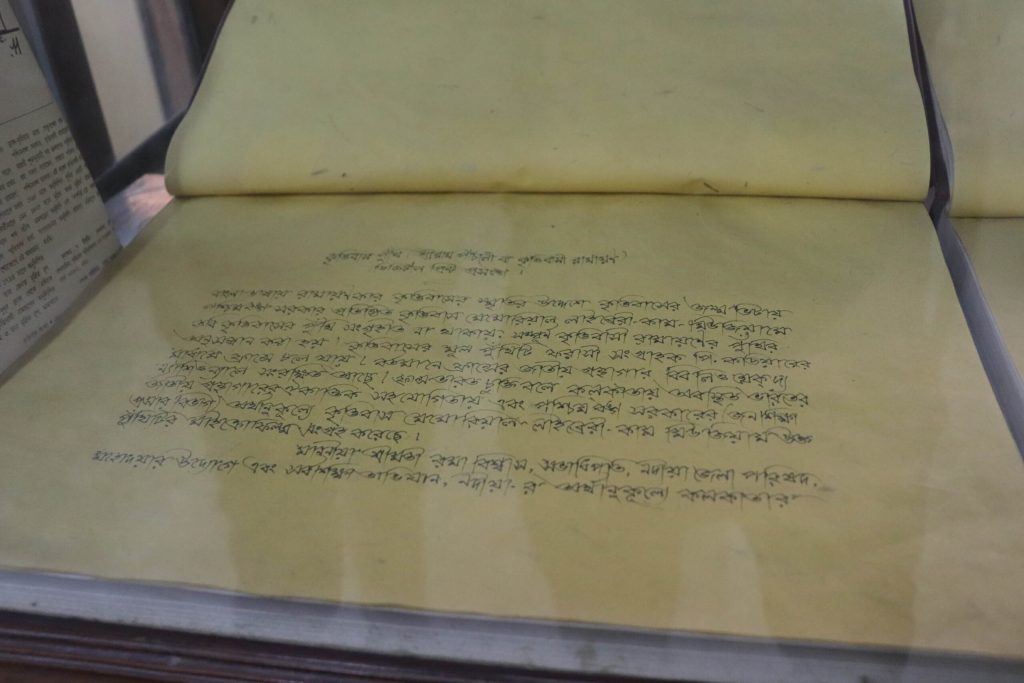
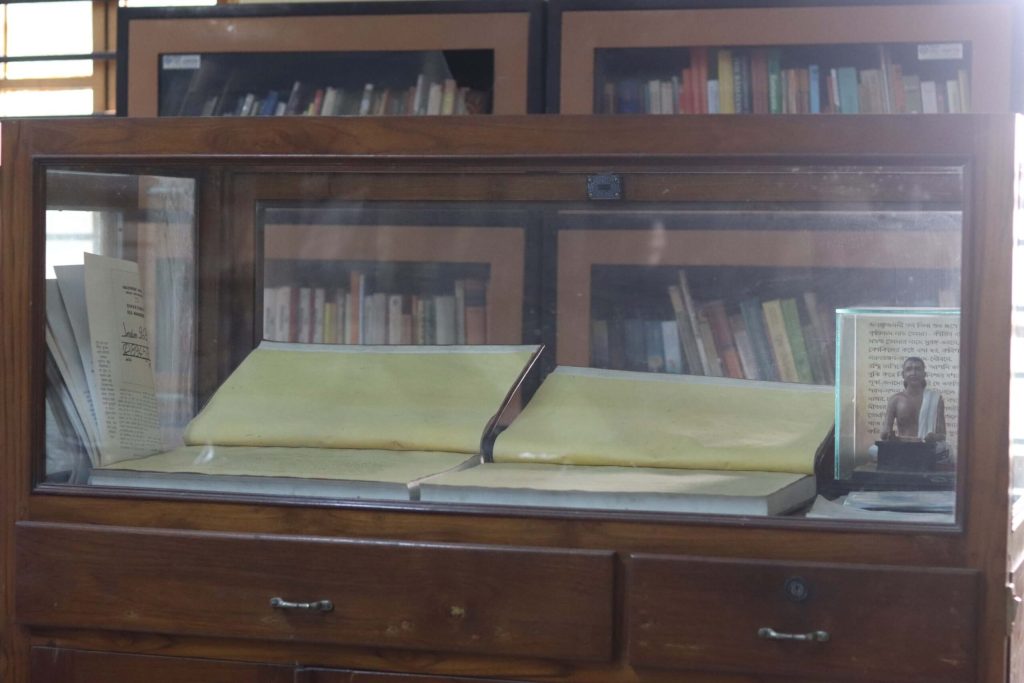
Every room is connected with each other. The lighting system is very old. You can feel the old days’ time.
Have a great time
What people want in their life. Most probably have a relaxing time and an outdoor time with your loved someone. This place is absolutely for one. You can spend your whole time here.
If you come here alone you can enjoy your time most. Especially this place is good for the devotee person. For a devotee person, this place is a haven. In West Bengal, Krittibas Ojha’s place is one of the great places.
How to come
By bus: To arrive in Phulia (Fulia Para Market, Kittibas Rd) Krittibas Ojha’s birthplace, you have to live 24 minutes (11 km) from Ranaghat. The fare of the bus is 15 rupees (INR). From Fulia Para Market, Kittibas Rd grabs a Toto and tells him you are willing to go Fulia Krittibas smriti Vidyalaya.
The Toto driver will cost you 10 rupees. This place is not far (1km) from NH12. So, you can come on your foot.
By train: As you know, it doesn’t matter where you are. If their train is available then your journey will be easy as compared to other transport. From Ranaghat Jn. you have to change the train.
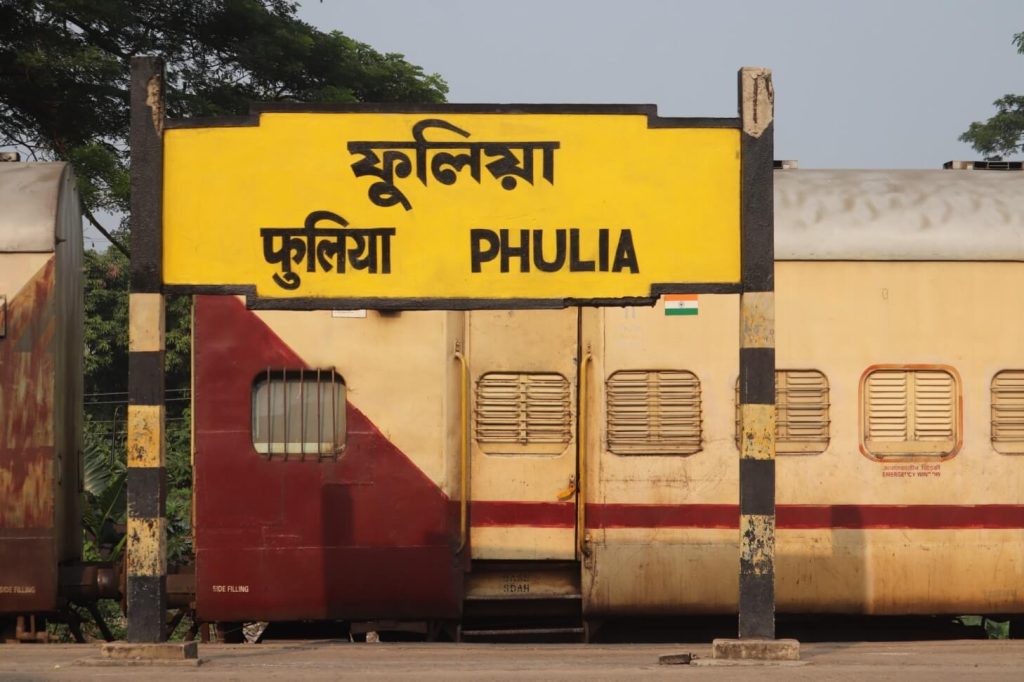
You have to grab Santipur local or you can grab this train from Sealdah or Naihati Jn. Come Phulia and by-by the train. And call a Toto and tell him you are willing to go to Krittibas Smriti Vidyalaya.

